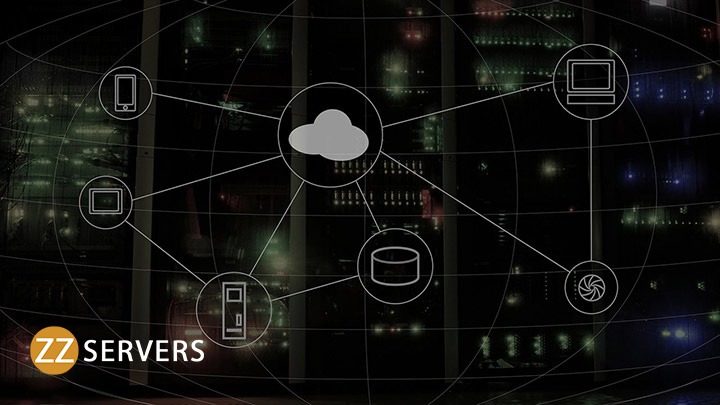IT assessment services provide a detailed look at your organization’s technology setup. An assessment helps answer what are IT assessment services and how they can support your business needs.
Assessments are helpful to:
● Understand your current IT infrastructure, applications, systems, and processes.
● Identify areas needing updates, like outdated software or hardware
● See how your setup helps or hurts productivity and workflows
● Prepare a plan for future technology needs and costs
● Find ways to improve security, backups, and disaster recovery
● Align IT with business goals like expanding or streamlining operations
By reviewing your full technology environment independently, you gain insights that can optimize processes, boost efficiency, and support your goals. An assessment report outlines your technology landscape while recommending effective strategies. It is an invaluable step to make informed decisions and get maximum value from your investment in IT.
Understanding Your Current Environment
In the pursuit of technological advancement, a comprehensive IT assessment serves as the cornerstone, beginning with a meticulous examination of existing infrastructure, applications, security measures, and organizational dynamics. This multi-faceted analysis not only unveils current strengths and vulnerabilities but also lays the groundwork for tailored recommendations, empowering decision-makers with a factual basis for strategic planning and resource allocation.
● Gaining Clear Insight: An important part of any IT assessment is understanding your existing technology environment. It provides a baseline for recommendations. A thorough evaluation of your current state is key to informed planning.
● Infrastructure Review: The assessment examines servers, storage, networking gear, and their usage. It reveals capacity, aging issues, and optimization opportunities. A workload analysis determines right-sizing needs.
● Application Portfolio: Applications supporting core functions and their infrastructure requirements are inventoried. Assessors analyze selection fit, performance, integration, licensing, and upgrade strategies.
● Security Stance: Getting a sense of security hygiene helps identify risks. Experts test firewalls, patches, credentials, and malware protection. They ensure compliance with policies, too.

● Backup & Disaster Planning: Readiness for outages and data loss situations is judged. Processes, retention windows, and recovery times are checked for effectiveness.
● Cloud and Mobility Plans: If leveraging flexible models, transition planning and governance are addressed. Compatibility with your platform is ascertained.
● Organizational Fit: Does structure enable or hinder goals? Processes are mapped for bottlenecks and redundancies. Skillsets against emerging needs are also gauged.
● User Experience Review: End-users provide feedback on usability, response times, and support satisfaction. This user-centric perspective ensures continuous improvement.
● Data and Analytics: Information assets and their management come under the lens. Analytics capabilities to glean insights are evaluated as well.
● Budget and Procurement: Spending analysis reveals waste and savings options. Procurement practices for standardization and negotiations are optimized.
The collective intelligence gathered forms a factual foundation for consultants to build customized recommendations. It also aids management in decision-making and resource allocation. Overall, current state validation is pivotal to technology enhancement.
Planning for the Future
Understanding where you stand presently allows for effective planning. Here are some key aspects an assessment addresses for your future state:
● Roadmap Development: A 3-5 year technology vision is created based on business objectives. It charts replacement/upgrade schedules with costs.
● Streamlined Operations: Redundant systems are identified for retirement. Standardizing platforms brings simplicity. Outsourcing non-core functions is suggested.
● Enhanced Productivity: Leveraging modern collaboration, automation, and analytics tools is recommended to boost efficiency.
● Security as a Priority: Proactive steps like regular audits, user awareness programs, and advanced monitoring tools are incorporated.
● Optimized Infrastructure: Right-sizing infrastructure to current/projected capacity prevents bottlenecks. Transitioning eligible workloads to the cloud is estimated.
● Continuous Improvement: A feedback mechanism involving users captures gaps in real time. A quarterly health check ensures staying ahead of the curve.
● Disaster-Ready Environment: Reliable backups, redundant networks, offsite archives, and tested recovery plans form a safety net for unforeseen situations.
● Talent Transformation: A skills inventory matches needs with the future state. Re-skilling, hiring, and outsourcing advice optimize human capital.
● Financial Forecasting: Budget simulations factor in modernization and maintenance expenses.
Vendor consolidation reduces licensing costs. With a well-defined roadmap, you can smoothly transition to tomorrow’s technology while extracting maximum benefits today. Regular assessments maintain this forward momentum.
Supporting Your Business Goals
An IT assessment ensures your systems propel business objectives. Here’s how it creates alignment:
● Understanding Core Functions: Consultants analyze your industry, customers, and offerings to map key activities.
● Supporting Growth Initiatives: Assessors identify technology needs for expanding markets, products, or service lines in development.
● Enabling Process Efficiencies: Manual workflows are recommended for automation using tools like RPA. Collaboration platforms improve team output.
● Empowering Remote Operations: A mobile workforce is supported through cloud solutions, strong security, and unified communication systems.
● Driving Better Decisions: Data collection, storage, and reporting capabilities are improved to fuel data-driven strategies.
● Serving Customers Seamlessly: Customer-facing portals and self-service features enhance the digital experience.
● Managing Risk and Compliance: Regulatory mandates on areas such as privacy, fraud, and cybercrime are facilitated through technology best practices.
● Optimizing Cost Structure: Leveraging scalable, pay-as-you-go solutions rather than large capital expenses improves affordability.
● Ensuring Continuity: Backup infrastructure, disaster recovery plans, and business continuity management systems safeguard operations.
With their assessment insights, consultants help align technology resources to your business objectives, enabling competitive advantage. Regular evaluations maintain this strategic alignment over time.
Benefits of Working with an Assessment Partner
While some organizations conduct assessments internally, independent experts offer distinct benefits:
● Objective Perspective: As consultants have no stake in existing tools, they provide unbiased findings without conflicts of interest.
● Specialized Knowledge: Assessors stay current on the latest technologies, standards, and best practices through diverse client exposure.

● Holistic Viewpoint: They tie together facets like infrastructure, security, and applications into a cohesive whole for a system-level report.
● Defined Methodology: A proven assessment framework and standardized templates yield consistent, actionable results every time.
● Quick Implementation: With experience streamlining the process, consultants complete work faster to accelerate your improvement plans.
● Accountability: We defined deliverables, timelines, and communication to keep the project on schedule for timely decision-making.
● Cost-Effectiveness: By avoiding steep learning curves internal teams face, assessments are cost-justified even for infrequent needs.
● Peace of Mind: You gain confidence that all bases are covered through a partner committed to quality and your long-term success. When understanding your IT landscape and planning strategic next steps, an expert assessment partner offers unmatched rigor and value. Their findings empower positive change.
Take the Next Step Towards Optimized Technology
Are you seeking valuable insights into how your systems support business goals while preparing for future needs? As a trusted technology advisor to small and medium businesses for over 17 years, ZZ Servers can provide the independent assessment expertise you require. Our proven methodology will analyze your entire IT environment to deliver clear recommendations you can act upon. Leveraging our deep experience, certified team, and customized approach, contact us today at 800-796-3574 to discuss how an assessment can empower your organization. You’ll gain the strategic guidance to enhance productivity through optimized, secure, cost-effective technology.
Conclusion
In conclusion, IT assessment services provide valuable insights into what are IT assessment services and how they can support your business technology needs. Some key takeaways include:
● Assessments evaluate your current IT setup, plans for the future, and alignment with objectives.
● You thoroughly understand infrastructure, applications, processes, security, and more.
● Recommendations help optimize costs, productivity, efficiency, and risks through strategic roadmaps.
● Independent experts offer objective viewpoints and proven methodologies.
● Regular assessments ensure continuous improvement and readiness for future demands.
A comprehensive IT evaluation enhances your environment, empowers your teams, and fuels business success through optimized technology. Contact ZZ Servers today to learn how our assessment services can benefit your organization.
Frequently Asked Questions
u003cstrongu003eIs an assessment worthwhile for a small business?u003c/strongu003e
Absolutely! Small businesses rely heavily on technology yet have tighter budgets. An assessment identifies low-cost ways to streamline, secure, and leverage IT for growth cost-effectively. Consultants consider your unique needs to maximize value.
u003cstrongu003eWhat does an assessment report include?u003c/strongu003e
A comprehensive assessment report outlines your entire technology landscape in detail. It includes an executive summary and findings on infrastructure, security, applications, processes, etc. Recommendations provide a roadmap for optimization along with financial impacts. Documentation aids strategic decision-making.
u003cstrongu003eHow long does the assessment process take?u003c/strongu003e
The length varies based on the scope but typically 1-2 weeks. Experts first gather details on requirements and then conduct virtual or on-site analysis. A report is delivered within 2-4 weeks with actionable next steps. Ongoing advisory ensures continuous progress monitoring.
u003cstrongu003eAre on-site assessments needed, or can remote assessments be done?u003c/strongu003e
Both options are available. Remote assessments cover preliminary discussions, documentation reviews, and interviews. However, on-site visits allow for validating settings, testing infrastructure, and gathering user feedback for a more thorough analysis. A hybrid approach strikes the right balance.
u003cstrongu003eWhat is the typical cost of an IT assessment?u003c/strongu003e
Pricing depends on the organization’s size, number of locations, and scope of work. On average, expect $5,000-$15,000 for a comprehensive assessment. However, savings identified often exceed costs within a year through optimizations like cloud migration, standardization, and security enhancements.


